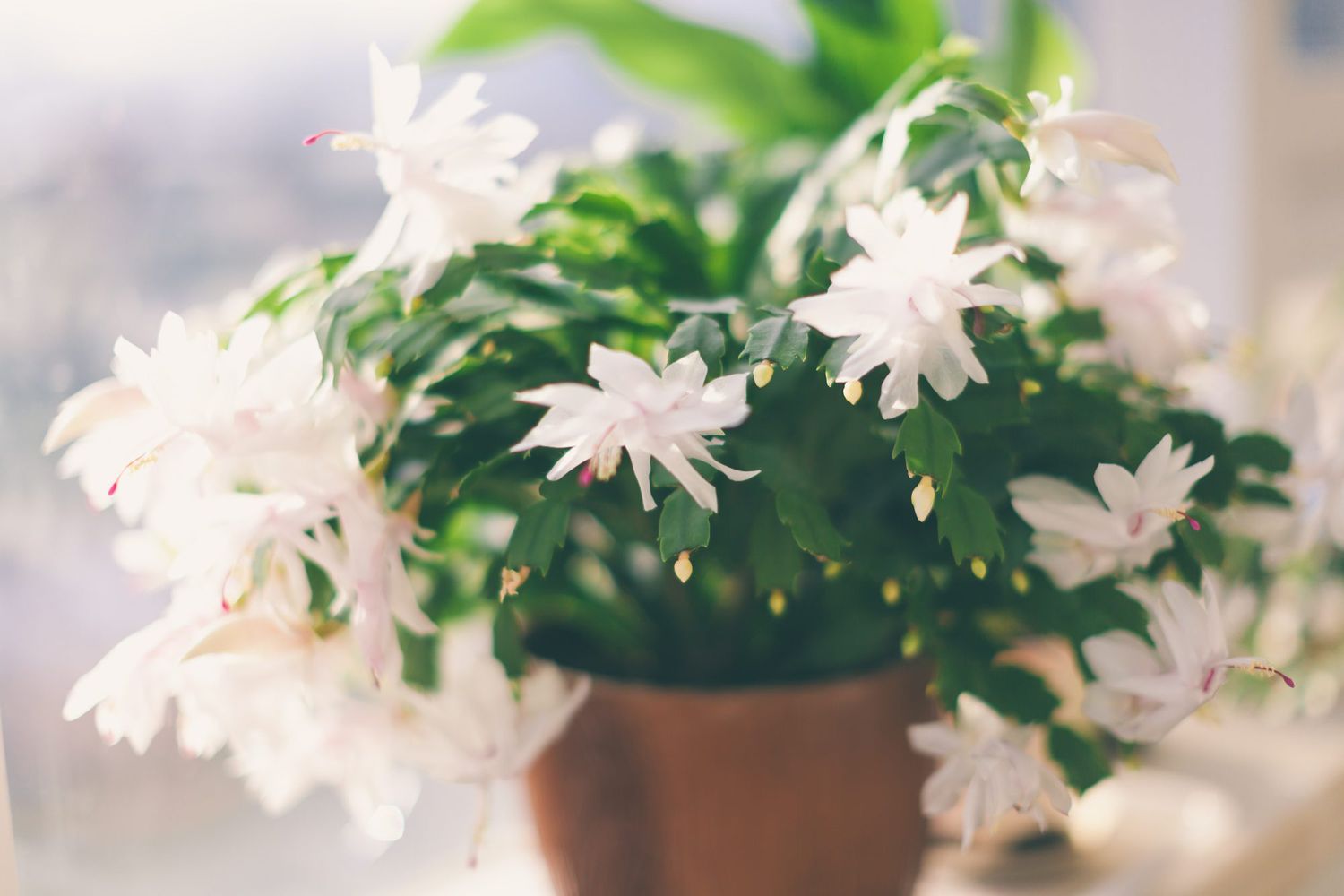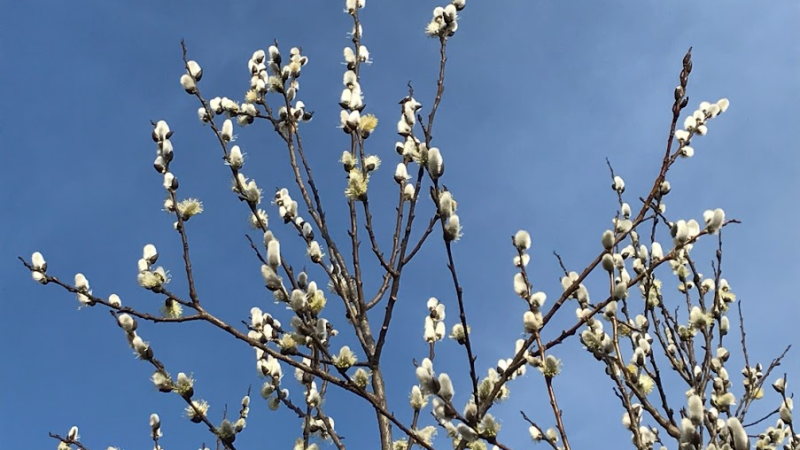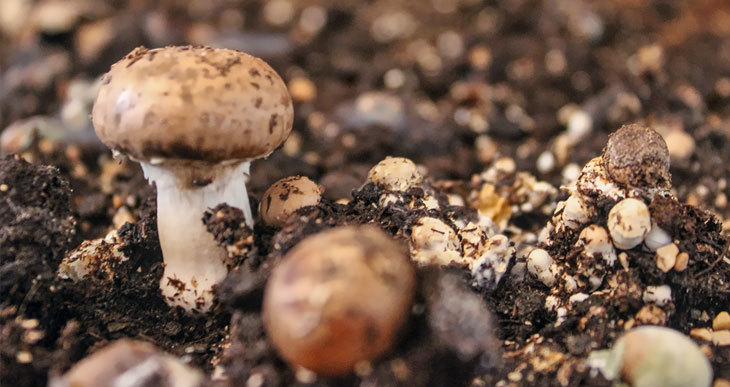Thanksgiving Cactus Care Guide: Tips for Growing a Festive Favorite

Thanksgiving cactus – Thanksgiving is a time for giving thanks, enjoying delicious meals, and spending quality time with loved ones. And what better way to embrace the season’s spirit than by adding a Thanksgiving cactus to your home?
With its vibrant, blooming flowers that often coincide with the holiday, the Thanksgiving cactus (Schlumbergera truncata) is a popular choice for seasoned plant enthusiasts and beginners.
In this Thanksgiving cactus care guide, we’ll explore how to nurture and maintain this charming succulent so that it thrives throughout the year, not just during the holiday season.
Understanding the Thanksgiving Cactus
Before delving into care instructions, let’s get to know this beautiful houseplant a little better. The Thanksgiving cactus is a tropical succulent native to the rainforests of Brazil.
Unlike its close relative, the Christmas cactus (Schlumbergera x buckleyi), Thanksgiving cacti have segmented, serrated, and slightly pointed stem segments. They are available in various colours, including shades of pink, red, and white.
Light Requirements
Proper lighting is crucial for the health and bloom of your Thanksgiving cactus. These plants thrive in bright, indirect light. Place them near a north or east-facing window where they can receive filtered sunlight for most of the day. Too much direct sunlight can scorch their delicate stems, so be cautious when locating them.
Temperature and Humidity
Thanksgiving cacti are sensitive to temperature fluctuations, so try to maintain a stable environment. They prefer temperatures between 60°F to 70°F (15°C to 24°C) during the day and slightly cooler temperatures at night. Avoid exposing them to drafts or sudden temperature changes.
In terms of humidity, Thanksgiving cacti enjoy higher humidity levels. To increase the humidity around your plant, you can use a humidity tray or a room humidifier or mist the plant occasionally. This will help prevent the edges of the stem segments from drying out and browning.
Watering
Proper watering is essential for the health of your Thanksgiving cactus. These plants prefer to be kept evenly moist but not soggy. Allow the top inch or so of the soil to dry out between waterings.
When you do water, thoroughly water, allowing water to drain from the pot’s bottom. Empty the saucer beneath the pot after watering to prevent the plant from sitting in standing water, which can lead to root rot.
You may need to water more frequently during the growing season (spring and summer). In contrast, reduce watering during the fall and winter, when the plant is dormant. Pay attention to your plant’s specific needs, as the watering frequency can vary depending on temperature and humidity.
Fertilizing
Feed your Thanksgiving cactus with a balanced, water-soluble fertilizer to encourage healthy growth and blooming. During the growing season (from spring to early autumn), you can fertilize your plant every 4-6 weeks. However, avoid fertilizing during the dormant period in late autumn and winter.
Pruning and Propagation
Pruning your Thanksgiving cactus can help maintain a bushy and attractive shape. You can pinch or prune the stem segments anytime during the growing season to promote branching. Additionally, if your plant becomes leggy or outgrows its pot, consider repotting it into a slightly larger container with a well-draining potting mix.
Thanksgiving cacti are relatively easy to propagate. You can do this by taking stem cuttings and allowing them to root in a separate pot. Wait until the cuttings have developed roots before transplanting them. This is a great way to share your love of these plants with friends and family.
Holiday Bloom
One of the most delightful aspects of Thanksgiving cacti is their stunning blooms, which typically occur in late autumn. To encourage blooming, ensure your plant experiences cooler temperatures (around 55°F or 13°C) and shorter daylight hours for several weeks in the fall.
This mimics its natural habitat and triggers the production of flower buds. Be patient; the buds may take a few weeks to develop and open into beautiful, vibrant flowers.
How to Get the Thanksgiving Cactus to Bloom?
Getting your Thanksgiving cactus (Schlumbergera truncata) to bloom can be a rewarding experience, as these vibrant and festive flowers are a beautiful addition to your home during the holiday season.
While Thanksgiving cacti are known for their relatively easy care, there are specific conditions and steps you can follow to encourage blooming. Here’s a guide to help you get your Thanksgiving cactus to bloom:
Provide the Right Light Conditions:
Thanksgiving cacti need bright, indirect light to thrive and bloom. Place your plant near a north or east-facing window where it can receive filtered sunlight. Avoid direct sunlight, which can scorch the plant.
Control Temperature and Light Exposure:
To stimulate blooming, your Thanksgiving cactus needs to experience cooler temperatures and shorter daylight hours. This mimics the plant’s natural conditions in its native habitat. Here’s how to do it:
Temperature: In the fall, expose your cactus to cooler temperatures, ideally around 55°F (13°C). This temperature drop helps trigger the development of flower buds. Keep it cooler at night, if possible.
Daylight Hours: Reduce the light your cactus receives for about 12-14 hours daily. You can do this by placing it in a dark room or covering it with a lightproof bag or box. Continue this for several weeks, usually from late September to early November, to encourage bud formation.
Watering During Budding Phase:
As your Thanksgiving cactus prepares to bloom, continue to water it, but reduce the frequency slightly. Allow the top inch or so of the soil to dry out between waterings. This mimics its natural environment, where it would receive less rainfall during this time.
Fertilize Sparingly:
During the budding phase (from late summer to early fall), you can provide a balanced, water-soluble fertilizer once a month. Be cautious not to over-fertilize, as this can lead to excessive vegetative growth at the expense of blooming.
Maintain Proper Humidity:
Thanksgiving cacti prefer higher humidity levels. You can use a humidity tray or room humidifier or mist the plant to increase humidity around it. Adequate humidity helps prevent the edges of the stem segments from drying out.
Pruning and Deadheading:
Prune your Thanksgiving cactus to maintain its shape and encourage branching. You can also deadhead (remove spent blooms) to redirect energy into producing new flower buds.
Avoid Stress and Disturbances:
Try to minimize stress or disturbances to your cactus during the budding and blooming phase. Avoid moving it or repotting it during this time, as this can disrupt the budding process.
Be Patient:
Be patient once you’ve provided the right conditions and followed these steps. The buds may take a few weeks to form and then open into beautiful flowers.
Common Problems With Thanksgiving Cacti
Like any houseplant, Thanksgiving cacti can encounter various issues that affect their health and appearance. Here are some common problems with Thanksgiving cacti and how to address them:
Overwatering:
Symptoms: Yellowing or wilting stems, root rot, mouldy soil.
Solution: Allow the top inch or so of the soil to dry out between waterings. Ensure your pot has proper drainage, and empty the saucer beneath the pot after watering to prevent soggy roots.
Underwatering:
Symptoms: Wilting stems, dry and shrivelled segments, lack of new growth.
Solution: Water your Thanksgiving cactus when the top inch of soil feels dry. Ensure the plant receives adequate moisture, but avoid letting it sit in standing water.
Insufficient Light:
Symptoms: Leggy growth, sparse blooms, pale stems.
Solution: Provide bright, indirect light near a north or east-facing window. If natural light is insufficient, consider using artificial grow lights designed for houseplants.
Wrong Temperature:
Symptoms: Stunted growth, bud drop, failure to bloom.
Solution: Maintain temperatures between 60°F to 70°F (15°C to 24°C) during the day and slightly cooler at night. Mimic the natural temperature drop in the fall to encourage blooming.
Inadequate Humidity:
Symptoms: Dry and brown edges on stem segments lack new growth.
Solution: Increase humidity levels around your plant by using a humidity tray, a room humidifier, or misting the plant regularly.
Pests:
Symptoms: Discolored or deformed leaves, webbing, tiny moving insects (like spider mites or aphids).
Solution: Inspect your plant regularly for pests and treat them promptly using insecticidal soap or neem oil. Isolate the affected plant to prevent the infestation from spreading.
Root Rot:
Symptoms: Yellowing or wilting stems, foul odour from the soil, mushy roots.
Solution: Ensure proper drainage by using a well-draining potting mix and a pot with drainage holes. Trim away affected roots, repot the plant in fresh soil, and adjust your watering habits.
Fungal or Bacterial Issues:
Symptoms: Spots, lesions, or unusual growth on stems or leaves.
Solution: Isolate the affected plant to prevent the spread of the infection. Remove the affected parts using clean, sterilized tools. Improve air circulation and avoid splashing water on the plant’s foliage.
Lack of Blooms:
Symptoms: No flowers despite favourable conditions.
Solution: Ensure your cactus experiences the right temperature and light conditions in the fall, as mentioned in the “How to Get the Thanksgiving Cactus to Bloom” section of the previous response. Also, be patient, as buds can take some time to form and bloom.
Stress Factors:
Symptoms: Dropping buds or flowers, wilting, slow growth.
Solution: Avoid moving or repotting your cactus during the budding and blooming phases, as these actions can stress the plant.
Regularly monitoring your Thanksgiving cactus and providing proper care will help prevent many of these common problems. Addressing issues promptly will ensure that your cactus remains healthy and vibrant, producing beautiful blooms year after year.
Common Issues and Troubleshooting
Like all houseplants, Thanksgiving cacti can face certain problems. Here are some common issues and their solutions:
- Yellowing stems: This can be a sign of overwatering or poor drainage. Adjust your watering habits and ensure the pot has proper drainage.
- Wilting stems: Underwatering is often the culprit here. Increase your watering frequency and ensure the soil stays evenly moist.
- No blooms: If your plant isn’t flowering, it may not be experiencing the right conditions for dormancy and budding. Adjust the temperature and light exposure as mentioned earlier.
- Pests: Watch for common indoor plant pests like spider mites and aphids. If you spot any, treat your plant promptly with the appropriate insecticidal soap or neem oil.
Conclusion
By following this Thanksgiving cactus care guide, you can enjoy the beauty of this festive plant throughout the year. With proper care, your Thanksgiving cactus will continue to thrive and bring joy to your home for many seasons. Whether it’s Thanksgiving, Christmas, or any day, your cactus will be a charming addition to your indoor garden.





